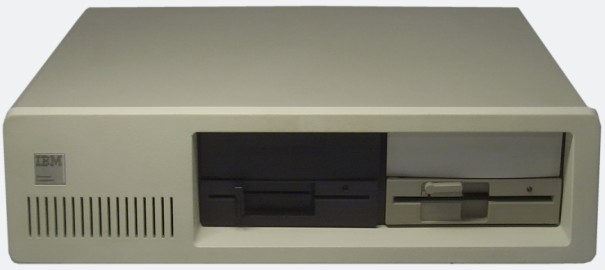
International Business Machines put their cards on the personal computer future with the IBM 5150 computer. This was a machine designed for business as well as personal use. It had not been too long before that IBM had been selling computers that bore a price tag into the millions of dollars. The IBM 5150 was designed as an “off the shelf” style of computer, creating the wave of IBM clones that would come after.
It was 1981 and the IBM 5150 hit the market. It was not the first personal computer, but is credited with starting the personal computer revolution. Previous computers crafted by IBM were big mainframe machines designed for business use. The idea of a computer for personal use and for a much smaller price was a departure from protocol for IBM. They made the right decision. The IBM 5150 bore the aspect of a true personal computer with the plastic covered monitor perched atop a plastic case. The QWERTY keyboard was stationed directly in front of them. All of the exterior pieces bore the same creamy beige color that permeated most of the computer world at the time. A big red power switch takes up residence on the side of the case.

On the front of the case of the IBM 5150 were two 5.25 inch floppy drives. Other than that, no other control buttons were on the front of the case. The 5150 came in two versions, the “A” and the “B” models. The “B” model had more memory with a distinguishing letter “B” on the back. The monitor was the place for buttons with two rotating knobs for screen control. If the user did not like the small screen of the monitor, the IBM 5150 had an option for a CGA card. The CGA card had an RCA connector to hook up to a television. The video output was of high quality. The technical manual for this computer was very detailed and covered circuit diagrams as well as the source code for the BIOS.

The hardware for the IBM 5150 computer was not too shabby for the day. The processor was from Intel and was an 8088 model running at 4.77 megahertz. It was accompanied by 16 kilobytes of random access memory ( RAM ). It could be expanded up to 640 kilobytes with expansion cards. What was enticing was that IBM designed the 5150 as a custom machine from the factory. It was ordered with what the customer wanted, like an auto. The read-only memory ( ROM ) was sized at 64 kilobytes. It held the BASIC-80 operating system. Storage consisted of 5.25 inch floppy discs, cassette tape and hard discs in a choice of 5, 10 and 20 megabytes. On the back were parallel and serial connectors for input and output.

The operating system for the IBM 5150 was a Microsoft creation with Bill Gates crafting some of the code. The group at IBM called it “IBM BASIC”. It is worth nothing that this computer could do most of things that computers do today. Email, word processing and spreadsheet calculations were within the realm of the 5150, thanks to its operating system and hardware. Games for the 5150 were simple. There were the keypunch games, such as black jack, solitaire, bowling champ and keno. Keno was one of the harder games to master. There was also master blaster, pac man and paratrooper.

The IBM 5150 was sold from around $1600 for a base model to up around $2800 to $3000 if more power was needed. It was discontinued in 1987. This computer is still popping up for sale today in various places. They sell for anywhere from $80.00 to $150.00 and are still fairly popular for those collectors interested in the early IBM machines.


